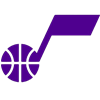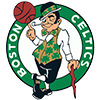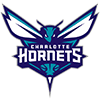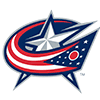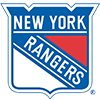This edition of the Job Battles series is the second part in however many parts it takes to get through the running backs. You can view the first edition (Cincinnati/Carolina/Denver) here.
This one will look at Green Bay and Indianapolis.
The competitions are listed alphabetically for team location, and the players are listed in order of years in the NFL. A general verdict is issued at the end of each blurb.
AJ Dillon vs. Emanuel Wilson vs. MarShawn Lloyd, GB
This blurb will instead look at the guys behind Josh Jacobs, who might be a little misrepresented in the current fantasy media consensus. None of these guys are likely to play much unless Jacobs gets hurt or unless it's a non-competitive situation (blowout, end of half, etc.)
Dillon was mostly promising in his first three seasons but was bizarrely useless in 2023, finishing with just 3.4 yards per carry while rushing for only two touchdowns. Dillon is clearly carrying too much mass and it weighs down his feet – Dillon weighs at least as much as Derrick Henry at three inches shorter. Henry would weigh less than he presently does if he were three inches shorter. Still, assuming nothing has changed with Dillon he will likely bounce back in 2024. If he doesn't bounce back then we would need some explanation for the regression, and physical decline isn't a viable one.
It would instead need to be something like, 'Dillon actually weighs 255 or 260 pounds now instead
This edition of the Job Battles series is the second part in however many parts it takes to get through the running backs. You can view the first edition (Cincinnati/Carolina/Denver) here.
This one will look at Green Bay and Indianapolis.
The competitions are listed alphabetically for team location, and the players are listed in order of years in the NFL. A general verdict is issued at the end of each blurb.
AJ Dillon vs. Emanuel Wilson vs. MarShawn Lloyd, GB
This blurb will instead look at the guys behind Josh Jacobs, who might be a little misrepresented in the current fantasy media consensus. None of these guys are likely to play much unless Jacobs gets hurt or unless it's a non-competitive situation (blowout, end of half, etc.)
Dillon was mostly promising in his first three seasons but was bizarrely useless in 2023, finishing with just 3.4 yards per carry while rushing for only two touchdowns. Dillon is clearly carrying too much mass and it weighs down his feet – Dillon weighs at least as much as Derrick Henry at three inches shorter. Henry would weigh less than he presently does if he were three inches shorter. Still, assuming nothing has changed with Dillon he will likely bounce back in 2024. If he doesn't bounce back then we would need some explanation for the regression, and physical decline isn't a viable one.
It would instead need to be something like, 'Dillon actually weighs 255 or 260 pounds now instead of the 247 he played at previously.' If Dillon has excessive muscle mass now that he didn't have previously, then that would be a viable explanation for why he might function worse now than he did previously. I'm unable to find evidence that any such thing occurred, however, so in the meantime I'm assuming Dillon will bounce back to his pre-2023 levels, when he had averaged 4.3 yards per carry with a touchdown rate of 3.3 percent (3.4 YPC and 1.1 percent in 2024).
One pertinent detail with Dillon, especially relative to Lloyd, is that Dillon pretty much never fumbles. Dillon has fumbled three times over 683 touches from scrimmage. In Lloyd's college career he saw 325 touches from scrimmage, fumbling a preposterous 11 times.
Yes, it's great that Lloyd averaged 7.1 yards per carry last year, but shouldn't a person wonder why USC didn't give him the ball more in that case? If Lloyd is compelling to the point that he could steal work from Jacobs then Lloyd ought to be able to keep a non-prospect like Austin Jones strapped to the bench. Instead, Jones would get about 1/3 of the reps in a scheme that already didn't run the ball much as an Air Raid offense.
The fact is glaringly clear: USC limited Lloyd's usage because they were afraid he would fumble. Lloyd pretty much lost the game for USC against Utah, both because of the turnover and because the coach admitted afterward that USC abandoned the run because of Lloyd's fumbles earlier.
#USC HC Lincoln Riley called MarShawn Lloyd's fumble "an expensive play" and admitted the turnover may have made Riley a little gunshy on calling the running game.
— Shotgun Spratling (@ShotgunSpr) October 26, 2023
And here is Lloyd fumbling at the Senior Bowl, coughing up the ball to 187-pound Max Melton.
Rutgers S Max Melton forces a fumble on Marshawn Lloyd after the Penix completion. Melton has been one of the more physical DBs so far. pic.twitter.com/gONawl4O5i
— Nick Harris (@NickHarrisDC) January 31, 2024
Lloyd and his 4.46 speed really stand out, and he certainly runs angry enough. As a threat from scrimmage Lloyd clearly checks the box. If he doesn't fundamentally change his game and start gripping the football it won't matter, though. If you apply Lloyd's collegiate fumble rate to Dillon's NFL workload you'd get 23 fumbles instead of Dillon's three. It's mind boggling that no one is addressing this in their hype cases for Lloyd.
Lloyd's fumbling is a problem and Dillon's own struggles reach such an extent that it's probably too early to cross of Wilson, even. Wilson presumably needs to earn Matt LaFleur's trust as a pass blocker – Wilson logged only four pass-blocking reps on 33 snaps last year – but Wilson projects as a viable player from scrimmage. Like Dillon, Wilson is a power back, meaning if Wilson can provide better from-scrimmage returns on the same play concepts as Dillon then Wilson might be a threat to Dillon. If Dillon is ahead of Lloyd on the depth chart then to me it stands to reason that Wilson could be as close or closer to the field than Lloyd.
Verdict: If Dillon stays healthy then Lloyd will likely be limited to 10 snaps or less most weeks, assuming Lloyd even beats out Wilson on the depth chart. There's a non-zero chance Lloyd is a healthy scratch for some amount of time. Although Lloyd is undeniably explosive and could offer big-play potential on plays like draws and screens, Lloyd's fumbling in college was the type that loses games and gets coaches fired. If he keeps fumbling in practice then Lloyd could go most of the season in shrink wrap.
Trey Sermon vs. Tyler Goodson vs. Evan Hull, IND
The assumption in most fantasy football media right now is that Sermon is the backup to Jonathan Taylor. We'll see.
Sermon was signed by Indianapolis in September, after the Eagles shed Sermon at the final roster cutdowns. The Colts cut Deon Jackson – by then behind Taylor and Zack Moss on the depth chart – to add Sermon to the active roster. Sermon played 28 snaps in the next two weeks as the RB2 behind Moss, with Taylor still out. Sermon ran for 24 yards on eight carries in those games while turning 14 routes into four receiving yards. Then Jim Irsay ended his lockout against Taylor, allowing Taylor to return to the field.
After Taylor's return Sermon would go on to log just 18 snaps over the next nine games, including just four snaps in Weeks 13 and 14 -- two of the games Taylor missed with the broken thumb. Moss played 114 snaps and Goodson played nine over those two weeks. Is it a good sign that the Colts decided to scale back Sermon's playing time drastically the longer he stayed with the team? Probably not.
Perhaps some of Sermon's current hype is just based on the Week 15 game against Pittsburgh, where Sermon ran for 88 yards on 17 carries. It was definitely a good showing for Sermon, but it was mostly garbage time numbers he accumulated after Moss left the game injured after a horsecollar tackle early in the second quarter. The Steelers completely collapsed after halftime, and that's when Sermon did the vast majority if his damage – against a gassed defense in a blowout.
Then the Colts scratched Sermon for Goodson in Week 18. So maybe Goodson should get some mention here.
Indeed, even Goodson put up numbers in the Pittsburgh game, playing 18 snaps while turning 11 carries into 69 yards, and two targets into two receptions for 10 yards. Goodson (5-foot-9, 197 pounds) is a hurryup type of running back and isn't build to last as an NFL starter, but at the very least Goodson's explosiveness and pass-catching ability is a contrast to Sermon. Goodson was credited with a 4.42-second 40 yard dash at the combine, whereas Sermon logged a 4.61-second 40 on the extremely fast Ohio State track. In other words, Sermon likely runs a 4.7 40-yard dash. And he doesn't catch passes.
Neither Sermon nor Goodson project to capably handle more than maybe 30 snaps in a given game, if that. Even up to that point we are probably talking a low standard of quality – there are a lot of running backs who can provide a better 20-snap sample than either of them. This makes both players vulnerable to rotation threats, even those signed from the practice squad or free agency. Sermon (rushing) and Goodson (hurry-up) are specialists who don't stand out in their field of specialty.
Hull is the only on-hand Colts runner other than Taylor who has a prayer of emerging as a viable starter at some point. Hull is likely a rather mediocre pure rusher – Sermon and maybe even Goodson have him beat there – but Hull is probably one of the NFL's most advanced pass catchers at running back. Goodson is clearly better as a passing-down back than Sermon, but Hull is clearly better yet than Goodson. Hull's pass-catching acumen is such that he would project for as many as 70 receptions as a starter.
Hull's one problem is the season-ending knee injury he suffered immediately in the 2023 season. Hull tore his MCL and suffered a 'root tear' of the meniscus, which is evidently a more serious iteration than some other meniscus tears. This explains why Hull missed the entire season for an 'MCL tear,' which would normally be more like a six-week kind of thing. Admittedly, I don't know of any other meniscus tears specifically described as 'root tears,' so I can't offer a case study of how Hull might look in his return. I would imagine some or many of the meniscus tears reported over the years were of the 'root tear' sort, but I have no way of confirming that speculation.
Either way, Hull was only cleared for football activities right before OTAs, and we don't know what level of activity he was granted. Beat writers trying to discern the depth chart based on OTAs might have been viewing reps where Hull wasn't actually cleared fully, leading to the false conclusion that Sermon was running ahead of Hull rather than the Colts choosing to simply ease Hull back into practice.
If Hull can't become his pre-injury self, then Sermon may very well be the technical RB2 behind Taylor, but (A) Goodson would be taking most or all of the passing-down snaps and (B) both Sermon and Goodson would be vulnerable to any waiver claims the Colts make at final cuts.
Verdict: If Hull can't emerge as the leader here then there will be a scattered committee behind Taylor rather than a clear hierarchy. Sermon isn't good enough of a pure rusher to monopolize a role as a pure rushing specialist, but he can't compete with Goodson or especially Hull for viability in passing situations.







